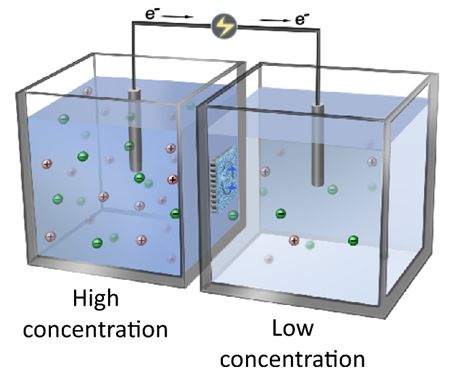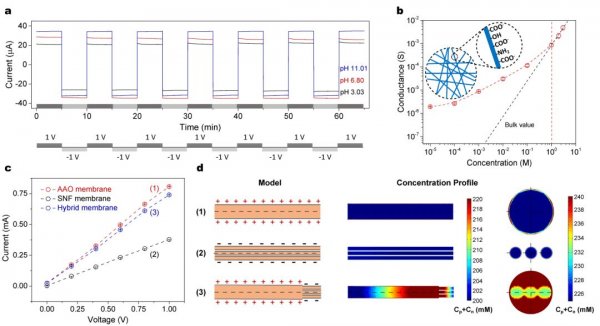As the demand for energy continues to increase, salt-difference energy (also known as blue energy) existing at the junction of river water and seawater has attracted great attention from scientists as a large-capacity and easily accessible energy source. Reverse electrodialysis technology (RED) is a promising method for obtaining salt difference energy. It captures Gibbs free energy between different water bodies in natural waters to obtain continuous electrical energy output.
The most critical component in the RED system is the ion exchange membrane. By improving the performance of membrane materials to obtain higher and more stable energy capture has become the direction of many researchers. Membrane-based nanofluidic systems and nanofluidic technologies exhibit good ion transport control capabilities in the nano-microenvironment, which brings new ideas for obtaining salt difference energy.
Based on the previous theoretical research, in order to further improve the performance of salt difference energy conversion, Wen Liping, a researcher of the Key Laboratory of Bionic Materials and Interface Science, Institute of Physical and Chemical Technology, Chinese Academy of Sciences, used natural silk as raw material and obtained silk nanoparticles through multiple steps The fibers are then assembled into silk nanofiber membranes.
This kind of negatively charged silk membrane and aluminum oxide membrane with adjustable chargeability (pH response) are assembled into a heterogeneous composite membrane, which is used for the capture of salt difference energy. Experimental results show that the composite membrane has a significant improvement in energy conversion performance compared to a single membrane. The theoretical simulation shows that the composite membrane has unique characteristics of ion transport and energy capture. The energy density of the composite system reached 2.86 W / m2 under a 50-fold salinity gradient.
In addition, the experimental results show that this kind of composite membrane with pore structure, chemical composition and asymmetric surface potential can effectively promote the transport of ions. The membrane has a wide working environment in a wide pH range, especially in alkaline solutions. The composite membrane exhibits excellent energy conversion performance, which lays the foundation for the application of the composite membrane to the energy extraction of industrial wastewater. It is worth noting that thanks to the rich content of β-sheet in the silk protein and the hydrogen bonding between the composite membranes, the membrane material exhibits long-term stability, which also laid the foundation for practical application.
Related work was recently published as a long article in "Nature-Communication" (Xin, W. et al. High-performance silk-based hybrid membranes employed for osmotic energy conversion. Nat. Commun. 2019, 10, 3876-3885), article The first authors are Xin Weiwen and Zhang Zhen, and the corresponding authors are Wen Liping and Kong Xiangyu. In addition, this work also applied for a national invention patent (Patent No. 4).

Figure 1. Schematic diagram of salt power generation

Figure 2. Assembly process of the composite membrane

Figure 3. The excellent ion transmission performance and high power density output of the composite membrane
Exposed Shower Sets,Universal Bathroom Shower Set,Shower Set For Bathroom,Hotel Shower Set
Kaiping Jenor Sanitary Ware Co., Ltd , https://www.jenorsanitary.com